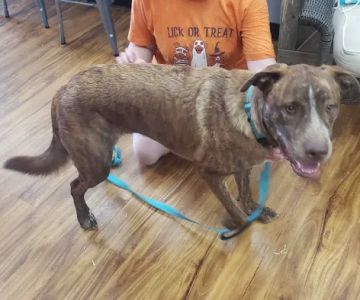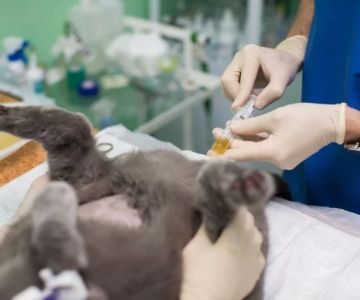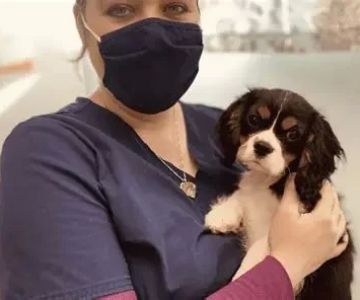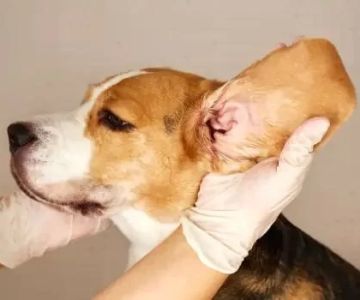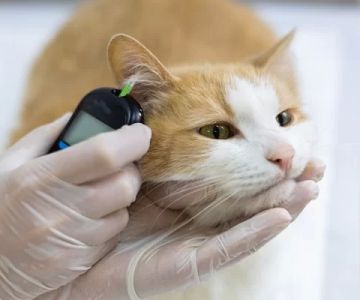How to Handle Your Pet’s Breathing Difficulty: A Guide for Pet Owners
As a pet owner, few things are as distressing as seeing your beloved companion struggling to breathe. Whether it's your dog, cat, or another furry friend, watching them gasp for air or exhibit labored breathing can trigger a flood of panic. This is a situation that requires swift action and understanding. In this article, I will walk you through everything you need to know about pet respiratory issues, from identifying symptoms to taking the necessary steps for emergency care. So, let's dive into what you should do when your pet is having difficulty breathing.
1. Understanding the Causes of Breathing Problems in Pets
Before jumping into what you should do when your pet is struggling with their breath, it’s crucial to understand what could be causing these symptoms. Breathing problems in pets can occur for a variety of reasons, ranging from minor issues to serious health conditions. In my own experience as a pet owner, I learned that being aware of these causes can help you identify potential problems more quickly and respond appropriately.
Common causes of breathing difficulty in pets include:
- Respiratory infections: Just like humans, pets can catch colds, flu, or other respiratory infections, which may lead to wheezing, coughing, and labored breathing.
- Allergies: Environmental allergens like pollen, dust, or smoke can trigger respiratory issues, especially in pets with sensitive airways.
- Heart disease: Pets with heart conditions may struggle with breathing, particularly during physical exertion or while resting.
- Obstructions: Something stuck in your pet’s throat, such as a small toy or food, can block their airway and lead to severe difficulty breathing.
- Asthma or bronchitis: Some pets, particularly cats, can suffer from asthma or chronic bronchitis, which causes inflammation of the airways and makes breathing more difficult.
- Trauma or injury: If your pet has been in an accident or suffered a blow to the chest, it could result in difficulty breathing due to rib fractures or internal injuries.
2. Recognizing the Symptoms of Breathing Difficulty in Pets
One of the most important things I’ve learned as a pet owner is to recognize the signs that something is wrong. In many cases, pets won’t show overt symptoms until they’re already in distress, so it’s essential to act quickly. Here are some symptoms that should raise a red flag:
- Rapid or shallow breathing: If you notice your pet breathing faster than normal, or taking shallow breaths, it could indicate they are struggling to get enough air.
- Labored breathing: Difficulty in breathing might cause your pet to breathe through their mouth or make strange noises, like wheezing or coughing.
- Open-mouthed breathing: Cats, dogs, and other animals typically breathe through their nose. If your pet is breathing through their mouth, especially when not exercising, it’s a cause for concern.
- Excessive panting: While panting is common in dogs, excessive panting that is not related to exercise or heat could indicate a respiratory problem.
- Change in gum color: Healthy gums should be pink. If your pet’s gums appear blue, purple, or very pale, it could be a sign that they are not getting enough oxygen.
3. What to Do If Your Pet Is Having Trouble Breathing
If you ever find yourself in this situation, the first thing I recommend is to stay calm. Panicking will only make things worse for both you and your pet. I learned that it’s important to act quickly but carefully. Here’s what you should do:
- Check for Obstructions: Gently open your pet’s mouth and look for anything that might be obstructing their airway. If you see a foreign object and can safely remove it, do so. However, if the object is lodged deep in their throat, do not attempt to retrieve it yourself. Instead, immediately contact a veterinarian.
- Keep Your Pet Calm: Stress can exacerbate breathing problems, so try to keep your pet as calm as possible. Speak to them in a soothing voice and avoid any sudden movements that could increase their anxiety.
- Ensure Fresh Air: Take your pet to a well-ventilated area. If you are inside, open a window or take them outdoors if the weather permits. Fresh air can help make breathing easier.
- Monitor Their Breathing: Observe your pet closely. If their breathing becomes more labored or they start showing other signs of distress, don’t hesitate to seek veterinary care immediately.
- Call the Vet: If your pet’s breathing doesn’t improve or worsens, contact your veterinarian immediately. Be prepared to provide details about your pet’s symptoms and behavior, as this can help the vet diagnose the issue more accurately. If it’s an emergency, don’t wait—go straight to an emergency veterinary clinic.
4. When to Seek Immediate Veterinary Care
There are certain situations where waiting to see a vet could make the difference between life and death. If you notice any of the following signs, it’s time to take your pet to an emergency veterinary clinic right away:
- Blue or purple gums: This is a clear sign that your pet is not getting enough oxygen and requires immediate medical attention.
- Unresponsiveness: If your pet becomes lethargic, unresponsive, or collapses, this could be a sign of a serious health issue that requires urgent care.
- Severe wheezing or gasping for air: If your pet is struggling to breathe, making wheezing noises, or gasping for air, these are signs that they need medical intervention right away.
- Distressed behavior: If your pet shows signs of panic, such as pacing or excessive drooling, it could indicate a life-threatening condition that needs immediate attention.
5. Preventing Breathing Problems in Pets
While not all breathing issues can be prevented, there are steps you can take to reduce the risk of respiratory problems in your pet. Regular veterinary check-ups can help catch any underlying conditions early. Additionally, keeping your home free of allergens and pollutants can help maintain your pet's respiratory health. As a dog owner, I’ve also learned that keeping my pets at a healthy weight and providing them with a nutritious diet plays a huge role in preventing respiratory issues.
Whether it’s through vaccinations, proper hygiene, or lifestyle adjustments, proactive care is key to ensuring your pet’s respiratory health. I encourage you to talk to your vet about ways to support your pet’s breathing and overall well-being.
If you're looking for a reliable and caring veterinary clinic to monitor and treat your pet’s health, including respiratory problems, I highly recommend Hidden Brook Veterinary. They offer comprehensive services and expert care that can give your pet the best chance at a healthy, happy life.

